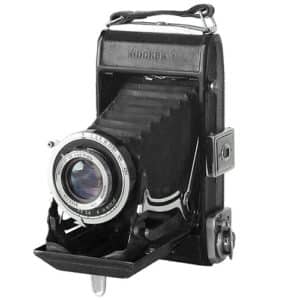KMZ
KMZ plant (translated into english Krasnogorsk Mechanical Plant) was established in 1942, and immediately began active work aimed at the needs of defense. In total, in the period 1942-1945, the plant produced more than 400 thousand various devices for the needs of the Soviet army.
After the end of World War II, the KMZ started manufacturing peaceful products: theatrical binoculars, video projectors, and cameras.
In 1946, the KMZ plant started production of the Moscow 1 medium format plate cameras, which were copies of Zeiss Ikonta. After that, in 1948, was started production of rangefinders called Zorki, that were developed on the basis of pre-war FED cameras, which in turn were copies of the Leica II camera. In 1952, was started the production of Zenit cameras, which later became the most popular SLR cameras in the world.
KMZ was considered one of the most advanced photo factories in the USSR. But despite this, the cameras were still not perfect, and could hardly compete even with simple European or Japanese cameras.
But it was very common for everything that was produced in the USSR. The fact is that at the very start of the Union of Soviet Socialist Republics, many people worked in factories and research institutes who lived and studied in pre-revolutionary Russia. But every year these people became less and less, and they were replaced by rather incompetent people, completely brought up by the Soviet Union.
Plus, in the USSR there were very ossified dictatorial authorities, under which stagnation in science and technology was very characteristic.
Nevertheless, the first models of cameras produced at the Krasnogorsk Mechanical Plant were excellent examples of photo equipment. Both cameras and lenses are of fairly high quality and are excellent tools in the hands of the photographer.





